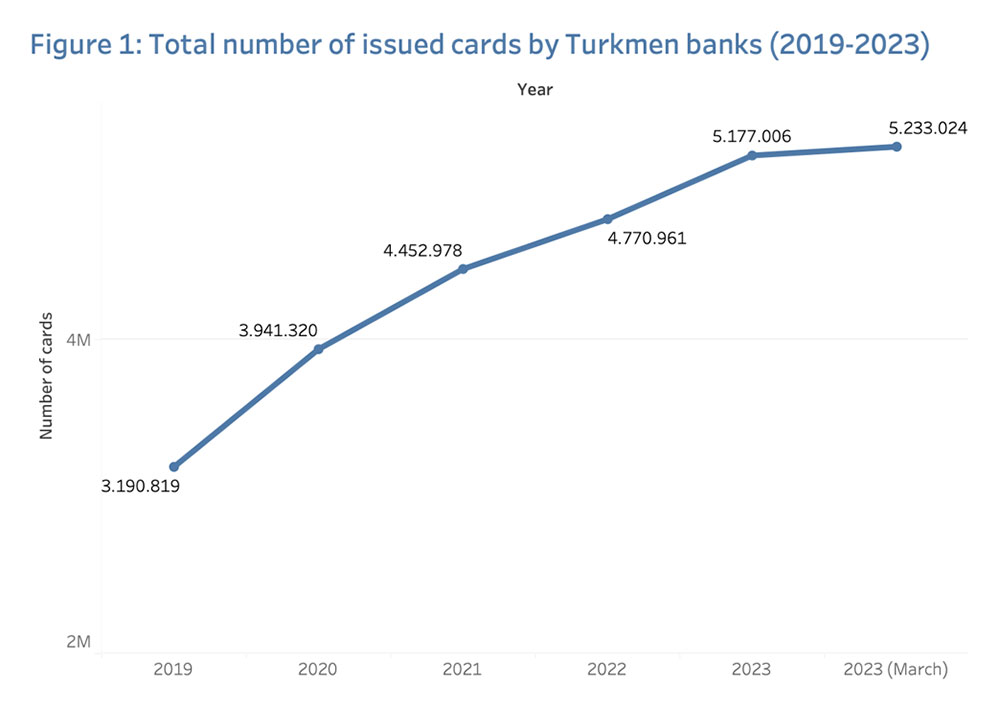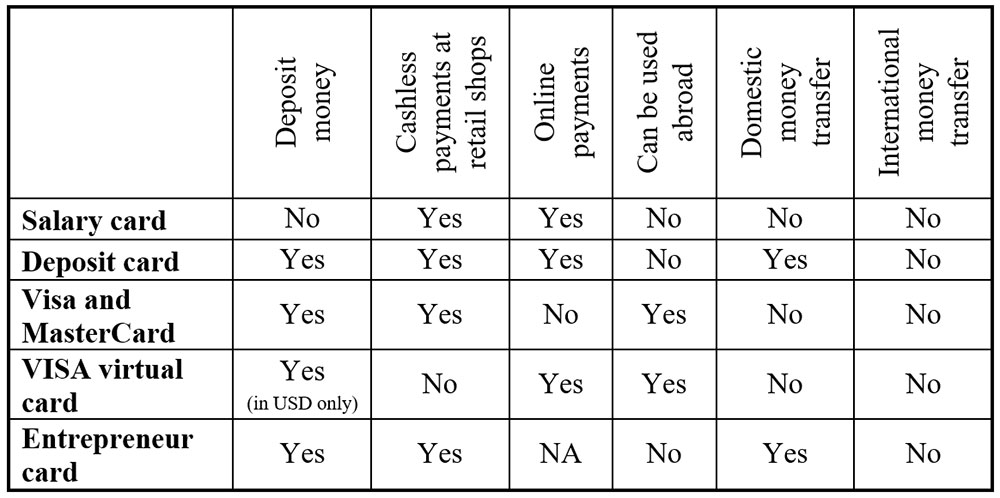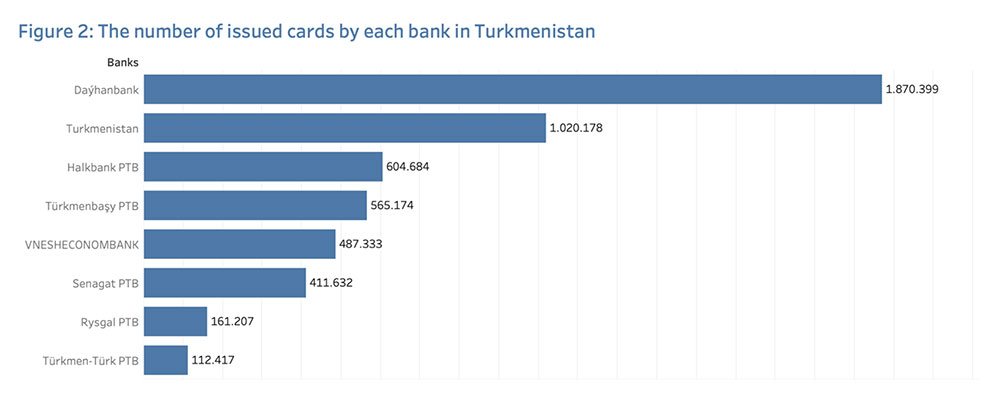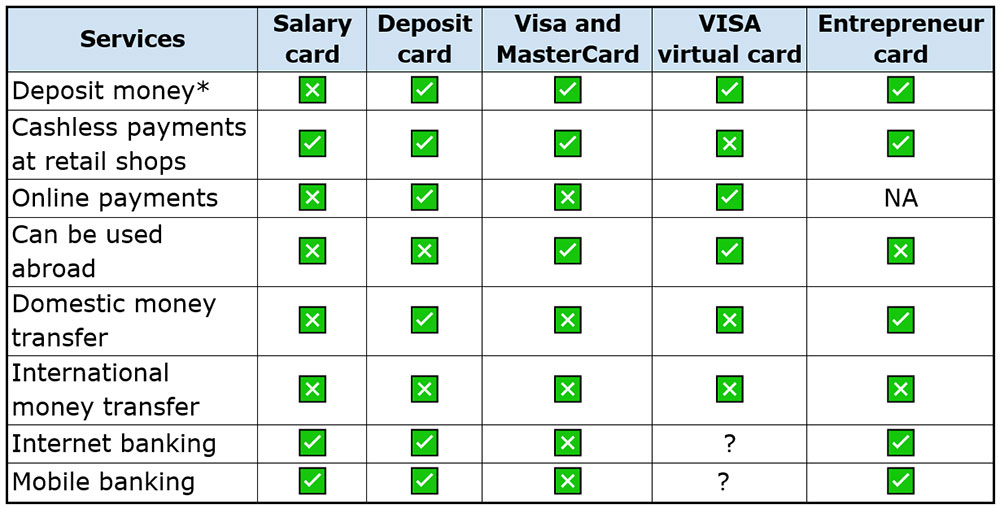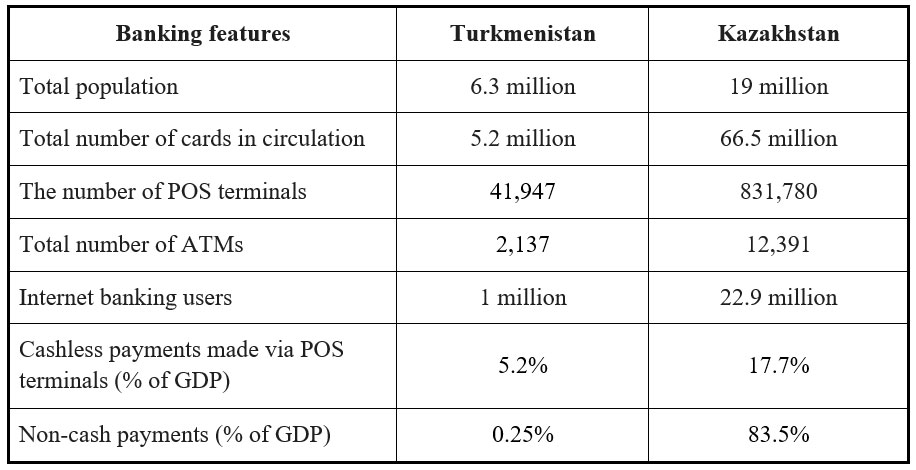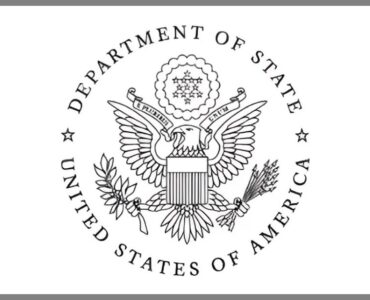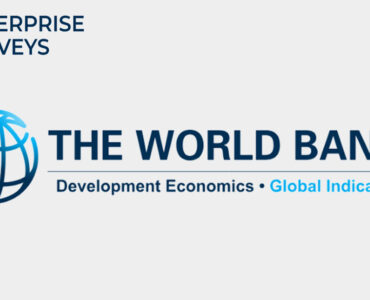The number of cards issued by the banks in Turkmenistan has been growing over the last five years. According to the Central Bank of Turkmenistan, the total number of cards issued by banks increased from 3,190,819 units of cards in January 2019 to 5,233,024 units as of March 2023. This is a 64% increase in 5 years (see Figure 1).
Source: Central Bank of Turkmenistan
Under a decree passed in 2013, all employees in Turkmenistan were required by the state to own a bank account to receive their monthly salaries from January 2016. Similarly, pensions, disability allowances, and other state benefits are also transferred to people’s bank accounts.
Too many cards, too little use
The majority of issued bank cards in Turkmenistan belong to the category of “salary cards” which are specifically designed to receive monthly salaries from employers. Salary cards have limited functionalities as customers can neither deposit money into these cards nor can they transfer funds to other users. See the table below to learn the differences in functionalities of bank cards.
Source: Turkmenportal, the State Bank for Foreign Economic Affairs, Rysgal Bank.
What types of banks operate in Turkmenistan?
In Turkmenistan, the Central Bank is the most powerful financial entity, and the bank provides directions to all commercial banks regardless of their ownership structure. There are eight commercial banks operating in Turkmenistan that issue bank cards to customers. Three out of these eight banks are state-owned and the remaining five banks are Joint Stock Commercial Banks (JSCB). JSCBs sell their stocks and are owned by shareholders (mostly by state entities).
As of March 2023, Dayhanbank issued the highest number of cards, followed by Turkmenistan bank. Both of these banks are state-owned, and together they account for 55% of all bank cards issued in Turkmenistan (see Figure 2).
Source: Central Bank of Turkmenistan
Digital banking
In addition to visiting bank branches in person, customers can access their bank accounts via digital platforms including Internet and mobile banking. The number of users of “Internet banking” reached 954,734 users, which amounts to just over 18.2% of all bank card users. Internet banking allows users to log in to their bank accounts through the webpage of individual banks. Additionally, the users of “Mobile banking” reached 62,531, which amounts to just 1.2% of all issued bank cards. Mobile banking allows users to access their bank accounts through mobile apps. Rysgal bank started offering mobile payments through QR codes, as well as enabling a digital wallet called “Rysgal Pay” to make payments with mobile phones at retail shops.
Donate to support Turkmen analysts, researchers and writers to produce factual, constructive and progressive content in their efforts to educate the public of Turkmenistan.
SUPPORT OUR WORKCashless payments
Users of national banks are able to make cashless payments with their cards at retail shops through point-of-sale (POS) terminals. POS terminal is a hardware system for processing card payments at retail locations. There are 41,947 POS terminals in total in retail shops in Turkmenistan. However, not many shops have installed point-of-sale (POS) terminals because they face many problems while trying to withdraw their money in cash from the banks. Among the local businesses, this problem is called “obnaliçka” (receiving cash). Businesses need cash to maintain day-to-day business operations. Businesses also need cash to buy USD in the black market, since banks cannot convert manat into other currencies easily due to strict currency controls.
According to the Central Bank of Turkmenistan, the total volume of non-cash payments made through POS terminals in 2022 exceeded 13.8 billion manats (3.9 billion USD per official exchange rate). This amount equals to 5.2% of the national GDP. In Kazakhstan, the volume of cashless payments through POS terminals amounted to 17.99 trillion tenge (39.8 billion USD) in 2022, which is 17.7% of the national GDP.
When it comes to online payments, the majority of shops do not offer such services. While banks provide the services to businesses in setting up online payments in manats, private retail shops are reluctant to install such services due to the “obnaliçka” problems. This is evident by the fact that the total amount of online payments and transactions in 2022 amounted to just 638.3 million manats (182.4 million USD per official rate) (Central Bank), which is equal to 0.25% of the national GDP. In Kazakhstan, the volume of cashless internet payments and transactions amounted to 84.7 trillion tenge (187.3 billion USD) in 2022, which equals to 83.5% of the national GDP.
What can your bank do for you in Turkmenistan?
*Can deposit money in USD only
Source: Rysgalbank; Turkmenportal; The State Bank for Foreign Economic Affairs of Turkmenistan;
Comparison of bank-related metrics between Turkmenistan and Kazakhstan
Although the population of Kazakhstan is three times larger than Turkmenistan, the number of banking cards in circulation are thirteen times higher in Kazakhstan. Additionally, Kazakhstan has twenty times more POS terminals, six times more ATMs and twenty-two times more users of internet banking services. For further details, refer to the comparison table below.
Source: National Bank of Kazakhstan; Central Bank of Turkmenistan


